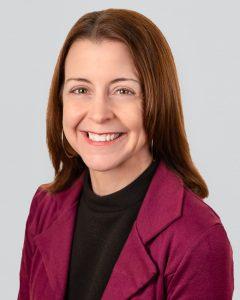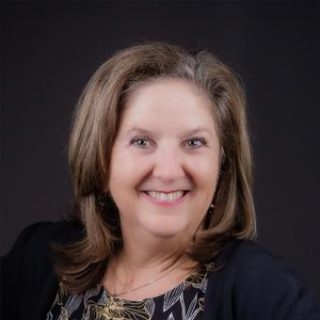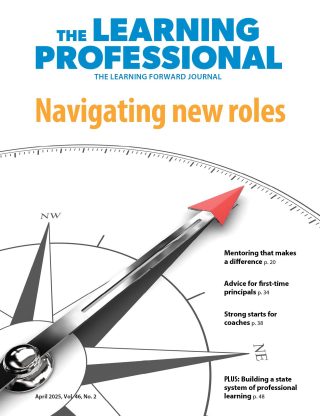FOCUS
Life is full of transitions, and so are schools
By Suzanne Bouffard
February 2019
Vol. 40 No. 1
Many years ago, when I relocated to begin graduate school, I wondered aloud to my family, “When do I get to stop starting over?” My mother was compassionate but blunt: “I hate to tell you this,” she said, “but never.”
Of course, we rarely start over entirely, but life is full of transitions, and so are schools. In this issue of The Learning Professional, we celebrate transitions and examine the challenges and opportunities they create for professional learning. This is a fitting moment for us at Learning Forward to reflect on turning points as our organization begins its 50th year and prepares for a leadership transition later this year.
No doubt many of you are experiencing professional and personal transitions as well. Almost a quarter of principals change jobs in a given year, and 8% of teachers change schools. Administrators and coaches hire and support about 90,000 new teachers a year (NCES, 2015; Carver-Thomas & Darling-Hammond, 2017).
According to our most recent member survey, 24% of Learning Forward members have been in their current jobs for less than two years. Not all of these transitions are problematic; many of them reflect a commitment to continued professional growth. In fact, career ladders are an intentional strategy for nurturing education leaders and retaining excellent educators in the profession.
Our members often tell us they find The Learning Professional and other Learning Forward resources to be indispensable when they transition to new professional roles. They talk about the opportunity to learn from peers grappling with similar challenges in other districts, exposure to topics they haven’t previously recognized as important to their work, and the value of tools for planning, assessing, and reflecting on their professional growth in their new position.
Many of our readers initially become members because they are responsible for the professional learning of others, in roles such as instructional coaching, curriculum development, and staff supervision. But professional learning remains important in every educational role and during every career transition. Consider the following ways professional learning resources can be useful.
- A director of professional development who becomes an assistant superintendent learns how to connect professional learning content and methods with overarching district goals, such as improving the quality and implementation of curricula and supporting staff retention.
- A teacher leader who shifts roles to work in a nonprofit organization stays current with the latest challenges school staff are facing and how nonprofits are building schools’ capacity to address them.
- A district leader who is elected to state or national office continually upgrades his ability to advocate for professional learning.
If your career path curves away from a day-to-day focus on professional learning, we hope you will stay connected with us and seize the opportunity to remain grounded in how educators are building their capacity to help all students succeed.
As you transition to new roles and tackle new challenges, let us know the topics and questions on your mind. How can we support you as you build new knowledge? And how can we learn from and share the knowledge you are gaining?
References
Carver-Thomas, D. & Darling-Hammond, L. (2017, August). Teacher turnover: Why it matters and what we can do about it. Palo Alto, CA: Learning Policy Institute.
NCES. (2015, November). Principal turnovers: Stayers, movers and leavers. Available at nces.ed.gov/programs/coe/indicator_slb.asp.

Suzanne Bouffard is senior vice president of communications and publications at Learning Forward. She is the editor of The Learning Professional, Learning Forward’s flagship publication. She also contributes to the Learning Forward blog and webinars. With a background in child development, she has a passion for making research and best practices accessible to educators, policymakers, and families. She has written for many national publications including The New York Times and the Atlantic, and previously worked as a writer and researcher at the Harvard Graduate School of Education. She has a Ph.D. in developmental psychology from Duke University and a B.A. from Wesleyan University. She loves working with authors to help them develop their ideas and voices for publication.
Recent Issues
LEARNING DESIGNS
February 2025
How we learn influences what we learn. This issue shares essential...
BUILDING BRIDGES
December 2024
Students benefit when educators bridge the continuum of professional...
CURRICULUM-BASED PROFESSIONAL LEARNING
October 2024
High-quality curriculum requires skilled educators to put it into...
LEARNING TO PIVOT
August 2024
Sometimes new information and situations call for major change. This issue...












